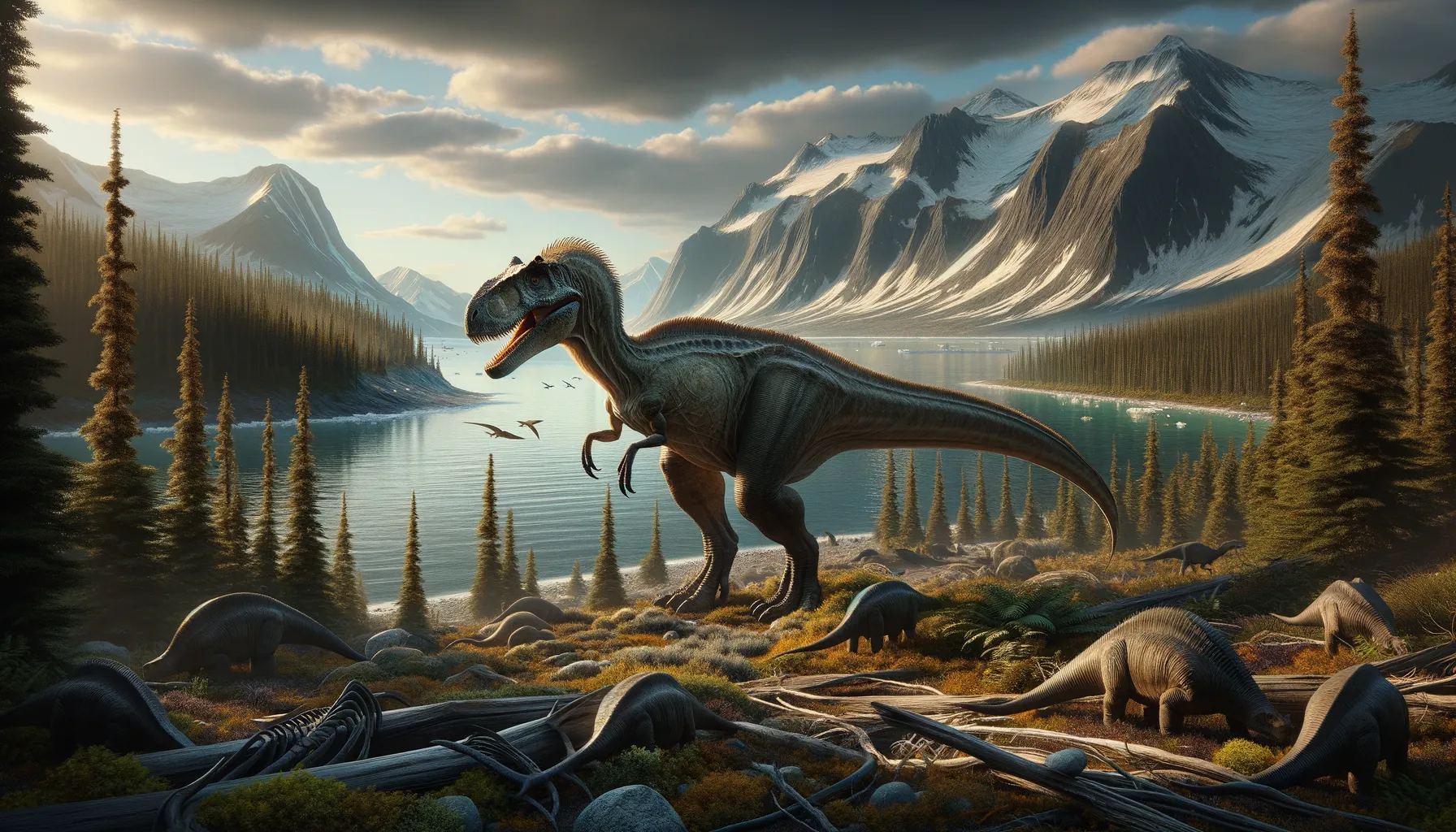
Nanuqsaurus
An Arctic predator in the prehistoric cold.
Period
Cretaceous
Length
Approximately 6 meters long.
Height
Around 2 meters tall.
Weight
About 1,000 kilograms.
Nanuqsaurus was a small tyrannosaurid dinosaur that lived in the polar regions of what is now Alaska. It adapted to harsh, seasonal climates with long periods of darkness. Known for its relatively short stature compared to other tyrannosaurs, this predator played a distinctive role in its ecosystem. Its discovery highlights the diverse range of dinosaur species that adapted to various environments during the Cretaceous period.
Diet
Nanuqsaurus was likely a carnivore, feeding on other animals. Its smaller size compared to larger tyrannosaurs suggests it may have hunted smaller prey or scavenged larger carcasses.
Hunting
Nanuqsaurus may have used its speed to ambush prey in the dim seasonal light. Its keen senses aided in detecting movement in its sparse, icy environment, allowing it to effectively hunt or scavenge.
Environmental challenges
Living near the Arctic Circle, Nanuqsaurus faced long, dark winters and cold temperatures, requiring adaptations for seasonal survival. The climate dictated a varied diet based on availability, challenging this predator to be versatile. It likely experienced strong competition for food resources due to scarce prey during harsh seasons.
Speed
Moderately fast for its size.
Lifespan
Approximately 20 to 30 years.
First discovery
Discovered in Alaska in 2006.
Fun Facts
- Nanuqsaurus lived around 70 million years ago during the Late Cretaceous period.
- Its name means 'polar bear lizard' because its fossils were found in Northern Alaska, hinting at cold climates.
- Despite being a dinosaur, Nanuqsaurus was relatively small compared to its cousin, the mighty Tyrannosaurus rex.
- Scientists believe Nanuqsaurus was around 20 feet long, roughly the size of a modern polar bear.
- Being a predator, Nanuqsaurus likely hunted other animals, adapting to the harsh, cold environment of ancient Alaska.
- The discovery of Nanuqsaurus highlights that dinosaurs were able to thrive in diverse and challenging climates.
- Nanuqsaurus is a great example of how prehistoric life evolved to adapt to different environmental conditions.
Growth and Development
Nanuqsaurus, like other theropods, hatched from eggs and grew rapidly to ensure survival in the competitive environment. Juveniles likely relied on camouflage and agility to escape predators. Growth patterns suggest it might have reached maturity relatively quickly to sustain its population.
Habitat
Nanuqsaurus inhabited a region characterized by cold, forested areas with variable daylight. The environment was dynamic, with summers bringing lush foliage and winters extending periods of darkness. Its habitat required robust survival strategies due to fluctuating resources and temperatures.
Interaction with other species
As a predator, Nanuqsaurus likely interacted with various herbivorous dinosaurs and possibly smaller carnivores. Competition with other predators for food would have been common, as the environment limited prey availability. Its presence influenced the population dynamics and behaviors of cohabiting species.
Natural lifespan
Nanuqsaurus lived approximately 20 to 30 years naturally.
Reproduction
Nanuqsaurus reproduced by laying eggs, likely in well-protected nests to shield from the cold. Parental care might have been present, with adults possibly guarding nests or young. The challenges of the environment meant successful reproduction was critical for the species' survival.
Social behaviour
Details on its social behavior remain speculative, but Nanuqsaurus might have been solitary or formed small groups, especially during hunting. Social interactions could have been necessary for mating and territory defense, with behavior varying seasonally.
Fossil locations
Fossils of Nanuqsaurus were discovered in northern Alaska, providing critical insights into its existence in polar conditions. The location highlights its unique adaptation to extreme climates during the Cretaceous. Additional sites may potentially expand understanding of its range.
